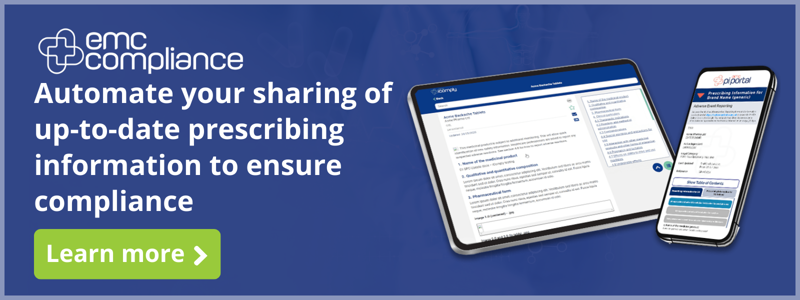Blog
Four reasons to develop your QR codes strategy ahead of the ABPI Code update
Aug 29, 2024
With the ABPI Code update approaching, here are our four reasons to start planning ahead of the anticipated change to Clause 12 on the use of QR codes for accessing prescribing information.

Simon Zedlewski
Content Marketing Manager, Datapharm
QR codes offer a highly effective and sustainable tool for Medical Information, Medical Affairs and Brand Marketing teams to share prescribing information with healthcare professionals.
With the impending update to Clause 12 of the ABPI Code of Practice, the pharmaceutical industry is now poised to harness QR code technology.
Here are four reasons to develop your QR codes strategy for prescribing information (PI).
Adopt a forward-thinking, digital-first approach to medicines information
The direction of travel in the UK Pharma industry is encouraging for digital practices such as QR codes when sharing medicines information.
Dr Amit Aggarwal, Director of Medical Affairs at the ABPI, said: “The use of QR codes on printed materials as an option to access prescribing information is an example of the continuous process of modernising the Code, which will give healthcare professionals greater ease of reference to essential and up-to-date information for their work.”
Reduce compliance risk with efficient processes
Here are just a few of the benefits of using QR codes to link to your PI:
- Process efficiencies – with printed PI, there’s that overhanging possibility that your materials would have to be recalled, updated and printed all over again following an update to part of the PI. QR codes can be that constant gateway to information which is kept up-to-date from a trusted and reliable source.
- Reducing compliance risk - because printed PI can go out of date at any time, it can be a huge risk when your printed materials are left in circulation. QR Codes therefore offer a constant interface to information which is maintained and updated in the digital realm.
- Engagement insights - QR Codes can incorporate tracked links so you are able to gain insight on user engagement and preferences, such as device type, user location and the time of ‘click’.
- Enhancing the experience with your brand - by offering a more interactive experience, this can create a bigger impact with your customers, especially those who are accustomed to consuming digital information in the palm of their hand.
Reduce your print debt
Even the abbreviated PI (which HCPs tend to favour less than the full SmPC) can still occupy valuable real estate on the page. Condensing this to a QR code can reduce your paper footprint significantly enough to make it a worthwhile benefit, while also contributing to sustainability targets.
Beginning to plan for QR codes internally could prevent potentially unnecessary print in a variety of ways; for example, by switching the location of prescribing information from physical copy to being linked to via QR code(s) on a slide deck.
It takes time to incorporate new processes within your organisation
Starting early allows your team to gradually integrate QR codes into your processes, ensuring a smooth transition when the Code update comes into force.
If you’re using them in physical materials, QR codes are much more than simply printing an image. For one thing, your organisation needs a fool-proof process of managing them while being audit-ready. You’ll also need to be stringent to ensure they are print-worthy and practical for use (our Best Practice guide on using QR codes covers this area in more detail).
Speak with us about operationalising QR codes in your organisation
emc compliance now includes the addition of QR code functionality, ensuring you have a low-burden, efficient process for managing your prescribing information when adopting QR Codes for your printed materials.
To learn more about this functionality, get in touch with our team.


